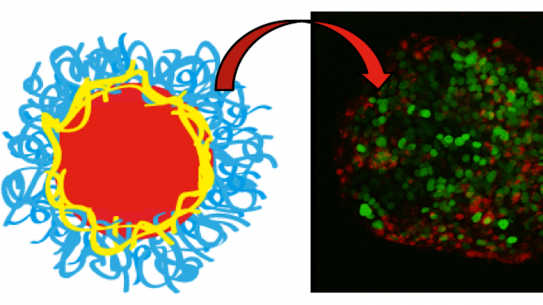New faculty, new nanomaterials

Assistant Professor of Chemical and Biomolecular Engineering Nathalie Pinkerton
Before arriving at NYU Tandon, Assistant Professor of Chemical and Biomolecular Engineering Nathalie Pinkerton spent three years in Pfizer’s Oncology Research Unit, where she developed novel nano-medicines for the treatment of solid tumors. The experience, she says, was invaluable. “Working in industry gives you a real-world perspective on what is feasible,” she points out. “The goal is to conduct translational research, meaning that it ‘translates’ from the lab bench to the patient’s bedside.”
Pinkerton — who earned a B.S. in Chemical Engineering from the Massachusetts Institute of Technology (2008) and a doctoral degree in Chemical and Biological Engineering from Princeton University — was attracted to NYU Tandon, in part, because of the opportunity to collaborate with researchers at NYU Langone, with whom she hopes to develop new nanomaterials that can be used for controlled drug delivery and other bio-applications. “Consider chemotherapy drugs, which kill not only cancer cells but healthy tissue,” she explains. “If we can find a way to get the drugs exactly where they need to go, patients would suffer significantly fewer side effects.” She cites medical contrast agents (such as those used during MRIs and CT scans) and vaccines as other areas in which nanomaterials can effectively be used — provided that discoveries made in the lab can be produced at scale for use in the clinic.
Pinkerton cautions that often drugs that appear to work in traditional 2D cell culture do not perform as expected in animal models. “A petri dish isn’t a very good model, because biological systems are much more complex,” she says, “yet, in vivo testing is expensive and problematic in other ways.” To mitigate that situation she is creating 3D cell culture models that bridge the gap between traditional 2D cell culture and animal models, thus allowing researchers to study how nanomaterials interact with biological systems in an innovative and effective way.
As a child, Pinkerton often accompanied her father, a chemistry professor, to his lab, where she discovered her love for research. She has been equally influenced by her mother, an avid believer in community service, who stresses the importance of working to improve the world. And that’s exactly what she is now doing, one new nanomaterial at a time.


